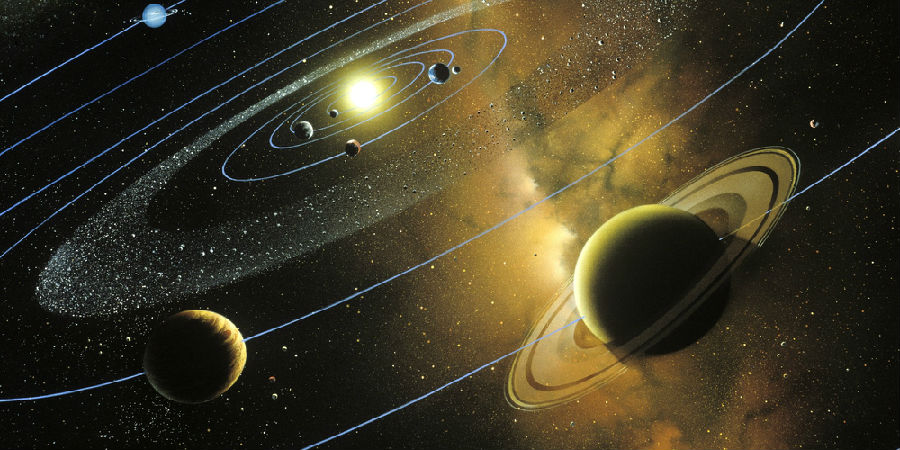Like a phoenix rising from the ashes, astronomers have found a whole new solar system may be forming in the wake of a star's violent death.
This is the Hidden Universe of the Spitzer Space Telescope, exploring the mysteries of infrared astronomy with your host Dr. Robert Hurt.
這是神秘宇宙斯皮策空間望遠鏡的發現,這個望遠鏡是羅伯特·赫爾特用來探索紅外天文學奧秘的利器。
When a massive star reaches the end of the line, it does not go gentle into that good night. It becomes a supernova, an explosion so bright that it briefly outshines everything else in the galaxy. Most of the heavy elements that make up planets, and even people, are forged in the nuclear furnaces of such explosions. Here we see heavy elements in the Cassiopeia A supernova remnant blowing back into the galaxy and mingling with interstellar gases. The next generation of baby stars forms from this material now enriched with building blocks for growing new solar systems and planets.

But what of the star that went supernova? Its core still remains in the form of a pulsar. This stellar corpse is tiny and dense, squeezing about 1.5 times the mass of the Sun into an object a mere 10 miles across.
那發生超新星的恒星去了哪里呢?它的內核依然以脈沖星的形式存在著。它的殘留物又小、密度又高,是太陽質量的近1.5倍,成了直徑10英里的物體。
A team led by Dr. Deepto Chakrabarty at the Massachusetts Institute of Technology has found that even a dead pulsar might play host to a whole new generation of planet formation. They studied a once-massive star that went supernova about 100,000 years ago. In the process it likely wiped out any existing planets. While most of the star-stuff blew off into space, a little bit fell back under the pull of gravity. Dr. Chakrabarty explains. If the original massive star was spinning fast enough then that material won't fall directly back onto the neutron star, but may instead form a disk, and so what we think we've found is a disk of this debris material that's left over from the explosion that formed the neutron star.
麻省理工學院查克拉巴蒂牽頭的一個小組發現,脈沖星即便消亡,也會對下一代行星的形成發揮關鍵作用。他們研究了一顆近10萬年前發生超新星的恒星,這顆恒星在消亡前質量很大。在這個過程中,它很有可能導致當時存在的行星滅跡。雖然大部分恒星都飛向宇宙之中,但還有少部分在引力的作用下落下。查克拉巴蒂表示,如果那顆質量超大的原始恒星轉速足夠快的話,那么其殘留物就不會直接落回中子星上,反而會形成一個圓盤,所以我們認為發現的是一個殘骸物質組成的圓盤,而這些殘骸是爆炸后遺留的,它們最終形成了中子星。
This disk has about 10 times the Earth's mass and looks very much like ones that produce planets around young stars. Moreover, it may help solve a recent planet-making mystery. In 1992, astronomers found the first planets outside our solar system, which were orbiting an older pulsar. But where did they come from? Could they have formed after their star went supernova? The discovery of a planet forming disk around a younger pulsar makes this likely. It seems new planets can arise from the ashes of their own star's death.
這個圓盤的質量是地球的近10倍,看起來很像在年輕恒星附近產生行星的圓盤。而且,這種圓盤或許可以助力解決最近一個有關行星產生的謎題。1992年,天文學家首次發現太陽系外的一些行星,它們都在圍繞一個年紀更大的脈沖星飛行。但它們是從何而來呢?它們是在恒星發生超新星后形成的嗎?在我們發現某行星在年級更小的脈沖星附近形成圓盤后,就更加確信了這一點。似乎新行星可以從原來恒星消亡的殘骸中重生。
However pulsar planets are pretty hostile real estate for life. Pulsars provide little light or heat and would bathe these worlds in intense radiation. A nuclear waste dump at the South Pole might actually be a little more pleasant.
不過,脈沖行星的環境很不適合生命存在。脈沖星上幾乎沒有陽光和熱量,到處都是強輻射。南極的核垃圾站可能都比脈沖星好些。











